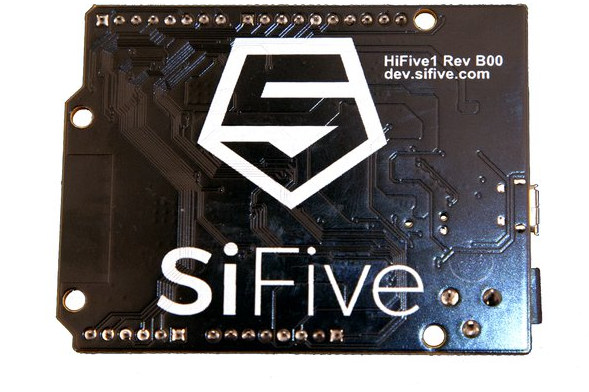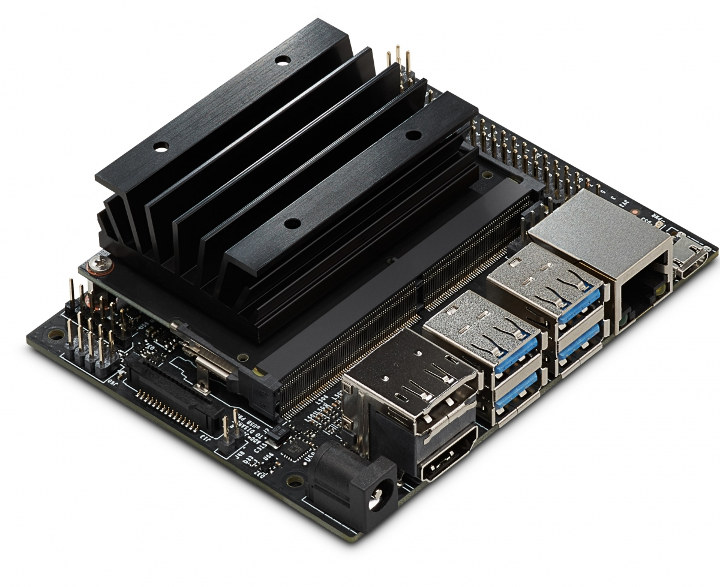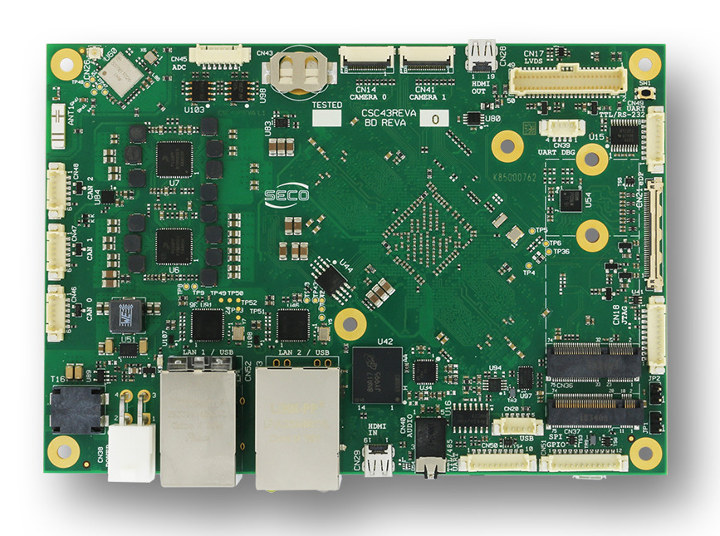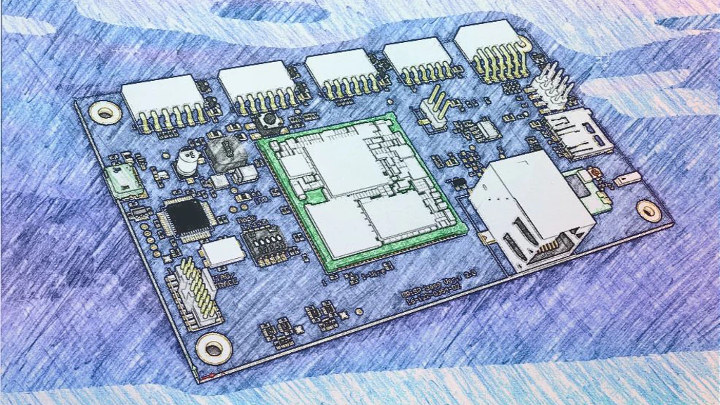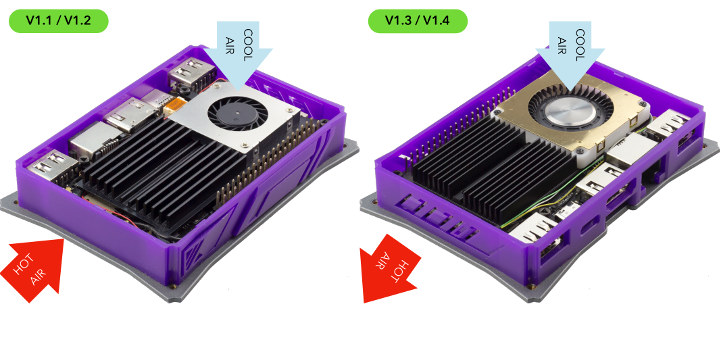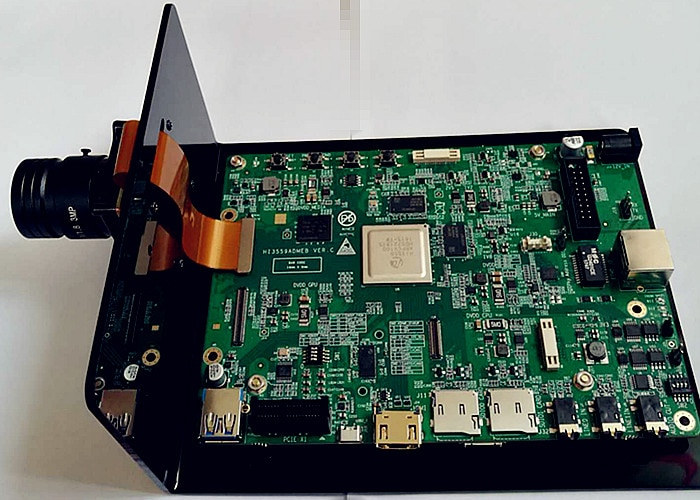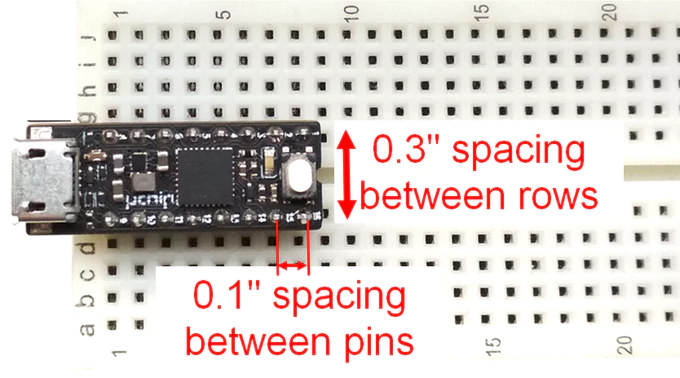SiFive launched what may have been the very first RISC-V development board in 2016 thanks to their HiFive1 Arduino compatible board powered by Freedom E310 (FE310) open source RISC-V processor. The company has now launched an upgrade version of the processor and board. Meet FE310-G002 processor and HiFive1 Rev B development board. HiFive1 Rev B development board specifications with new features highlighted in bold or stricken-through: MCU – SiFive Freedom E310-G0002 32-bit RV32IMAC processor @ up to 320+ MHz (1.61 DMIPS/MHz) Storage – 32 Mbit SPI flash (was 128 Mbit in the first version) Connectivity – ESP32-SOLO-1 WiFi & Bluetooth module I/Os 19x Digital I/O Pins 19x external interrupt pins 1x external wakeup pin 9x PWM pins 1/3 SPI Controllers/HW CS Pins I/O Voltages – 3.3V or 5V supported; note: bidirectional level shifters removed so FE310-G002 can drive the I/O pins directly at 3.3V only. USB – 1x micro USB […]
NVIDIA Introduces $99 Jetson Nano Developer Kit
NVIDIA Tegra X1 octa-core Arm processor with a 256-core Maxwell GPU was introduced in 2015. The processor powers the popular NVIDIA Shield Android TV box, and is found in Jetson TX1 development board which still costs $500 and is approaching end-of-life. The company has now introduced a much cheaper board with Jetson Nano Developer Kit offered for just $99. It’s not exactly powered by Tegra X1 however, but instead what appears to be a cost-down version of the processor with four Arm Cortex-A57 cores clocked at 1.43 GHz and a 128-core Maxwell GPU. Jetson Nano developer kit specifications: Jetson Nano CPU Module 128-core Maxwell GPU Quad-core Arm A57 processor @ 1.43 GHz System Memory – 4GB 64-bit LPDDR4 @ 25.6 GB/s Storage – microSD card slot (devkit) or 16GB eMMC flash (production) Video Encode – 4K @ 30 | 4x 1080p @ 30 | 9x 720p @ 30 (H.264/H.265) Video […]
Seco SBC-C43 SBC Features NXP i.MX 8 QuadMax Processor, 8GB RAM
When NXP unveiled their first 64-bit i.MX processors in 2016, we had three families: i.MX 8 Cortex-A72/A53 for high performance, i.MX 8M Cortex-A53 for audio/video application, and i.MX 8X Cortex-A53 for low power applications. Most of the designs we’ve seen so far are based on i.MX 8M family, and we’ve seen few hardware platforms based on the top of the line i.MX 8 QuadMax SoC with two Arm Cortex-A72 cores, four Cortex-A53 cores, two Cortex-M4F real-time cores, and two GC7000XS/VX GPUs. We did cover several modules based on i.MX 8 QuadMax processor including Advantech ROM-7720 Qseven 2.1 Computer-on-Module, Toradex Apalis i.MX 8 CoM, and Congatec conga-SMX8 SMARC 2.0 SoM among others, but AFAICR I had yet to see an i.MX 8 QuadMax single board computer. So Seco SBC-C43 appears to be the first SBC powered by NXP’s most powerful i.MX 8 processor, coupled with up to 8GB DDR4, 32GB eMMC […]
GRiSP 2 Board Targets Embedded Erlang & Elixir Development (Crowdfunding)
Erlang is described as a programming language used to build massively scalable soft real-time systems with requirements on high availability, and used in telecoms, banking, e-commerce, computer telephony and instant messaging. Elixir is a dynamic, functional language designed for building scalable and maintainable applications that leverages the Erlang VM, known for running low-latency, distributed and fault-tolerant systems. Elixir is used in many types of applications from higher-level web development to the embedded software domain, and Peer Stritzinger designed GRiSP board especially for the latter in 2017. He’s now back with GRiSP 2 featuring an NXP i.MX 6ULL SoM running Linux and RTEMS (Real-Time Executive for Multiprocessor Systems) RTOS. GRiSP 2 board is comprised of a system-on-module and baseboard with the following specifications: System on Module SoC – NXP iMX6UL Arm Cortex-A7 @ 696 MHz, 128 KB L2 cache, with TRNG, Crypto Engine (AES/TDES/SHA), Secure Boot Memory – 128 MB DDR3 […]
FOSSASIA 2019 Schedule – March 14-17
As its name implies, FOSSASIA is a Free and Open Source Software event taking place every year in Asia, more specifically in Singapore. I first discovered it last year, and published a virtual FOSSASIA 2018 schedule last year to give an idea about the subjects discussed at the event. It turns out FOSSASIA 2019 is coming really soon, as in tomorrow, so I’m a bit late, but I’ll still had a look at the schedule and made my own for the 4-day event. Thursday – March 14, 2019 10:05 – 10:25 – For Your Eyes Only: Betrusted & the Case for Trusted I/O by Bunnie Huang, CTO Chibitronics Security vulnerabilities are almost a fact of life. This is why system vendors are increasingly relying on physically separate chips to handle sensitive data. Unfortunately, private keys are not the same as your private matters. Exploits on your local device still have […]
Khadas VIM2 v1.4 SBC Gets Bluetooth 5, Thermal Improvements, a Larger SPI Flash
Announced in summer of 2017, Khadas VIM2 was the first Amlogic S912 development board, and I had the chance to review the board with a dual DTV tuner add-on board shortly after launch, eventually explaining how to use VIM2 as a live TV streaming server in Android. Shenzhen Wesion has however recently launched Khadas VIM2 v1.4 with various improvements they neatly describe in a PDF document. Before I go through the main changes, I’d like to remind readers there are three versions of Khadas VIM2 (v1.2) boards: VIM2 Basic – 2GB DDR4, 16GB eMMC flash, Ampak AP6356S wireless module with 802.11 b/g/n/ac WiFi 5, and Bluetooth 4.1 connectivity VIM2 Pro – 3GB DDR4, 32GB eMMC flash, Ampak AP6359SA wireless module with 802.11 b/g/n/ac with RSDB and Bluetooth 4.2 connectivity VIM2 Max – 3GB DDR4, 64GB eMMC flash, Ampak AP6359SA wireless module with 802.11 b/g/n/ac with RSDB and Bluetooth 4.2 connectivity […]
HiSilicon Hi3559A Board Enables Smart 8K Camera Development
HiSilicon Hi3559A 5-core Arm Cortex A73/A53 camera processor was announced in 2017 with support for 8K 30fps or 4K 120fps video recording, as well as an integrated dual core neural network accelerator (NNA). It should not be confused with the earlier Hi3559 4K 30 fps processor, or the newer Hi3559C that looks to be the same as Hi3559A without the NNA. Nevertheless, today I was lead to check about Hi3559A processor once again, and I could not find any camera that you can just buy and use today. I still found some upcoming Hi3559A products with OBSBOT Tail AI camera offered for as low as $509 on Kickstarter (delivery scheduled for April 2019), one 4K 120fps OEM? camera from GKuvision, as well as an HiSilicon Hi3559A development board for 8K camera applications, which I’ll look into more details in this blog post. HI3559AV100DMEB specifications: SoC – Hisilicon Hi3559A V100 with […]
DIP-Sized uChip Arduino Zero Compatible Board Loves Your Breadboard (Crowdfunding)
Most so-called breadboard-friendly boards that can easily be inserted into a breadboard often leave only one or two rows to play with on each side. This may suitable in many cases, but some people really want to use as many rows as possible, and come up with a solution using 90 degrees headers with 0.3″ spacing between them, just like 0.3″ wide chips do, and allowing the use of 4 rows on each side of the board. It does the trick, but this is not a standard solution, requires some bending of the headers, and covers part of the board so it’s not really ideal. A better way would be for somebody to design a narrow board using headers with 0.3″ spacing, and that’s exactly what Itaca Innovation has done with their Arduino Zero compatible uChip board designed in a 16-pin DIP package. uChip specifications: MCU – Microchip SAMD21 Arm […]


